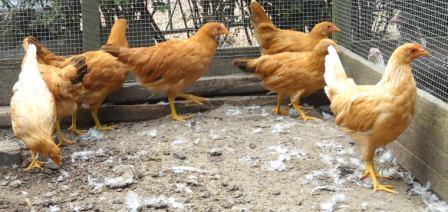The wild type gene is duckwing and chicks show back stripes,dominant white can appear as faint white back stripes.Dominant white is closely related to dun,smokey,and lavender,so blue shades can appear.White Leghorns can carry black,barring and columbian .A few points to ponder,more background information,rather than anything else.I do not consider these genes as preventing anyone from working with stock having them.They all recombine and will allow you to select and improve ( purify and refine)your gene pool.An exception would be when all the birds are pure or have two doses (homozygous) for a gene,or total lack a gene,then you would have to introduce it again to get results.After several years ,and no varition showing up in the offspring,this is what could be happening.
In general the best advice is to raise lots of offspring to give genes and combinations a chance to appear.Since the male chicks are 50%,of each hatch on average,you can cull them heavy for color and type,as only a few are needed for breeding.They are 50% of the blood the next generation will have and so are important for improvement.Always keep a few spare males around,in case of loss and using several males lowers inbreeding depression. I was just talking with someone who only bred a tiny number of birds each year,one year he got no male chicks and the old male died.He could not find any stock he liked and his line died out. I would say he did a number of things wrong and he was to blame. Dan Honour
In general the best advice is to raise lots of offspring to give genes and combinations a chance to appear.Since the male chicks are 50%,of each hatch on average,you can cull them heavy for color and type,as only a few are needed for breeding.They are 50% of the blood the next generation will have and so are important for improvement.Always keep a few spare males around,in case of loss and using several males lowers inbreeding depression. I was just talking with someone who only bred a tiny number of birds each year,one year he got no male chicks and the old male died.He could not find any stock he liked and his line died out. I would say he did a number of things wrong and he was to blame. Dan Honour




